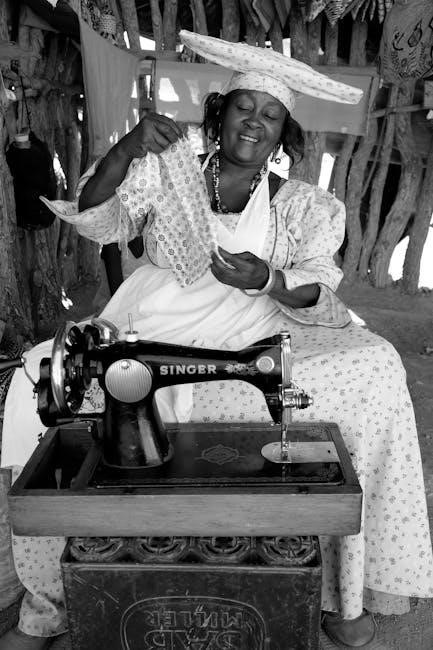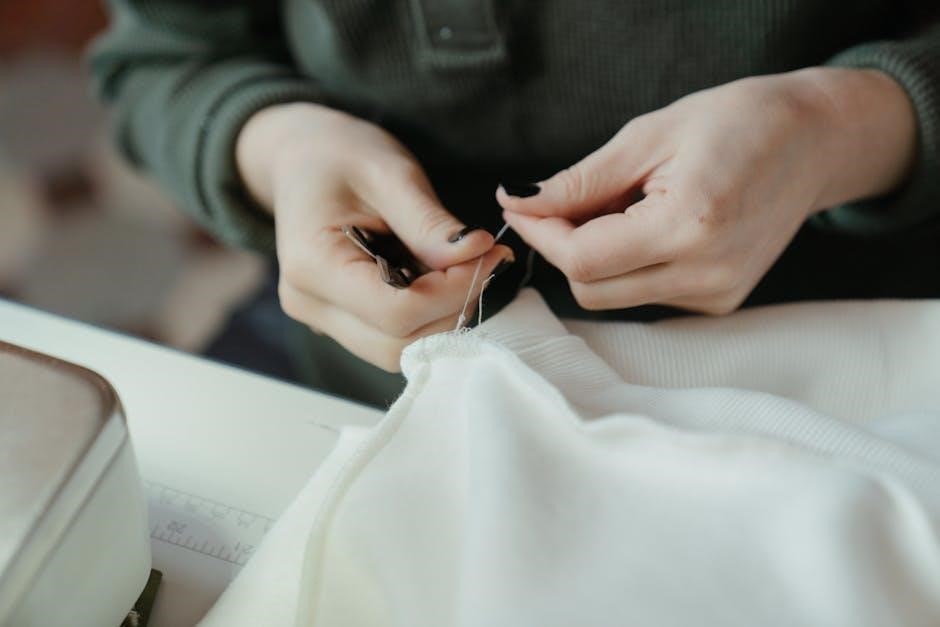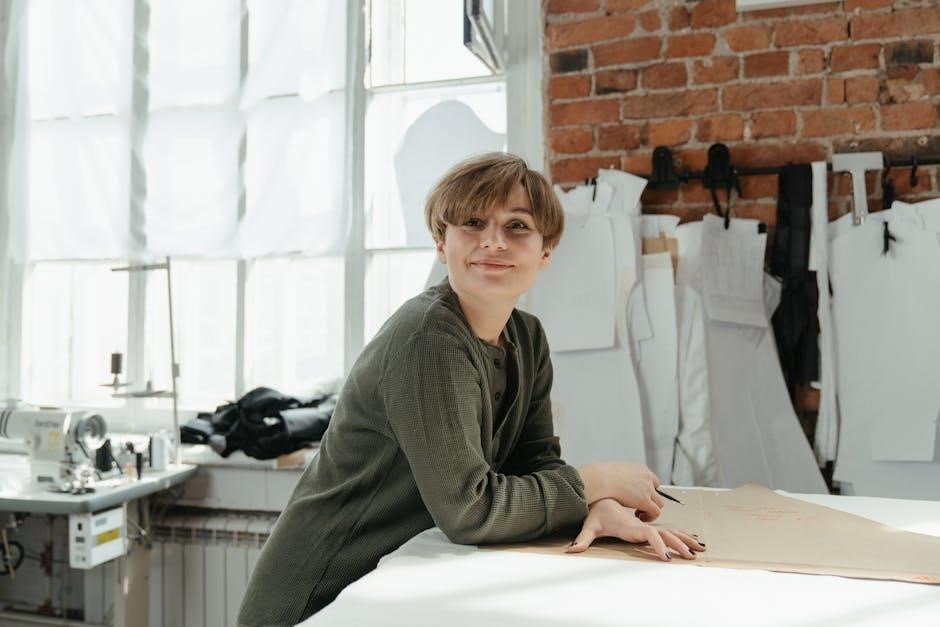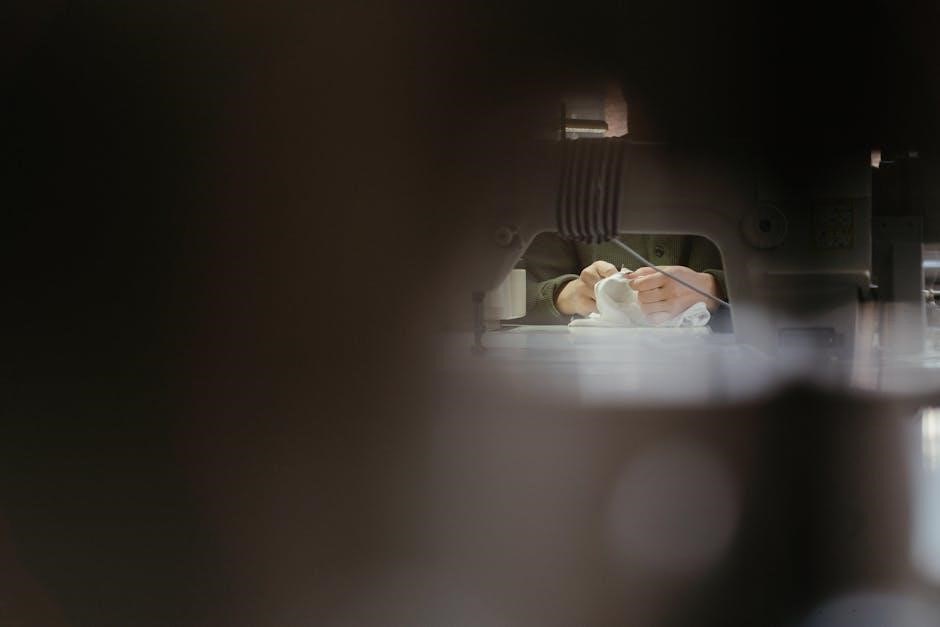singer manual sewing machine
Singer Manual Sewing Machine: A Comprehensive Overview
Singer manual sewing machines represent a cornerstone of textile history․ They are synonymous with quality and durability․ The brand has been a household name for generations․ Its history stretches back to the mid-19th century․ It represents innovation and accessible technology․
The History of Singer Sewing Machines
The Singer sewing machine’s history is deeply intertwined with the evolution of the textile industry․ It started with Isaac Merritt Singer․ He patented his version of a sewing machine in 1851․ Singer‘s machine wasn’t the first, but it incorporated key improvements․ These improvements made it more practical and efficient․
The Singer Sewing Machine Company quickly rose to prominence․ It became a leader in the burgeoning sewing machine market․ The company’s success wasn’t solely based on technological innovation․ It was also due to groundbreaking business strategies․ These strategies included mass production, marketing, and sales techniques․
The company’s history reflects a commitment to innovation․ It also reflects a strategic approach to global expansion․ From its early days, Singer aimed to make sewing machines accessible to homes․ It also aimed to provide them to businesses worldwide․ This vision shaped the company’s trajectory․ It solidified its place in history as a transformative force․
The brand’s enduring legacy is built on quality․ It is also based on accessibility and innovation․ The history of Singer sewing machines is a story of adaptation․ It is also a story of impact on society and industry․
Isaac Merritt Singer and the First Practical Sewing Machine
Isaac Merritt Singer, born in 1811, was an American inventor and businessman․ He is most notably known for his improvements to the sewing machine․ While not the original inventor, Singer‘s contributions were pivotal․ They transformed the sewing machine into a practical tool․ It was a tool that could be widely adopted․
Singer‘s key innovation was combining a vertical needle with a horizontal sewing surface․ He also incorporated a thread controller․ These features addressed flaws in earlier designs․ They made the machine more reliable and easier to operate․ The 1851 patent marked the beginning of Singer‘s dominance in the sewing machine industry․
His machine was not just a technological advancement․ It represented a shift in how textiles were produced․ Garments could now be made more quickly and efficiently․ The “Singer” name quickly became synonymous with sewing․
Singer‘s entrepreneurial spirit extended beyond mere invention․ He founded I․M․ Singer & Co․ His vision was to mass-produce and market his sewing machines․ This proved as crucial to his success as the machine itself․ His approach laid the foundation for a global empire․
Singer’s Innovations in Sewing Machine Design
Singer‘s impact on sewing machine design extends far beyond his initial improvements․ The Singer company consistently introduced innovations that enhanced functionality․ They also improved user experience and manufacturing efficiency․ These innovations solidified Singer‘s place as an industry leader․
One crucial innovation was the development of interchangeable parts․ This streamlined production and simplified repairs․ It made Singer machines more accessible to a broader market․ The company also pioneered the use of a foot treadle․ This freed up the operator’s hands to guide the fabric․ This greatly improved the control and precision of sewing․
Singer‘s engineers constantly refined the internal mechanisms․ They increased the speed and reliability of the machines․ They introduced features like adjustable stitch length and tension control․ This allowed users to work with a wider range of fabrics and thread types․
The zigzag sewing machine was another significant Singer innovation․ It expanded the creative possibilities for sewing․ It made decorative stitching and mending easier․ These design improvements, both large and small, contributed to Singer‘s enduring legacy․

The “Sewing Machine War” and the Patent Pool
The early years of sewing machine development were marked by intense legal battles․ These battles are known as the “Sewing Machine War․” Numerous inventors, including Singer and Elias Howe, held patents for essential components․ This created a complex web of competing claims and lawsuits․
The high licensing fees associated with these patents stifled innovation and industry growth․ Manufacturers spent more resources fighting in court than improving their machines․ Recognizing the need for a solution, Orlando Brunson Potter proposed a revolutionary idea: a patent pool․
This pool, known as the “Sewing Machine Combination”, brought together the key patent holders․ Including Howe, Singer, and Wheeler & Wilson․ They agreed to share their patents and a standardized licensing fee․ This fee was lower than the previous fees․ This allowed other manufacturers to enter the market․
The patent pool fostered collaboration and accelerated technological advancement․ It allowed the sewing machine industry to flourish․ It also paved the way for Singer to become a dominant force in the global market․ The resolution of the “Sewing Machine War” through the creation of the patent pool was unprecedented․

Singer’s Business Innovations: Marketing and Sales Strategies
Singer’s success wasn’t solely due to its sewing machines․ The company also pioneered innovative business strategies․ These strategies revolutionized marketing and sales practices․ Edward Clark, a key figure, played a crucial role in shaping these approaches․
One of Singer’s most impactful innovations was the hire-purchase plan․ This plan allowed customers to buy sewing machines on installment․ This made them accessible to a wider range of consumers․ This innovative financing option opened up the market․ It allowed those who could not afford the upfront cost to own a machine․
Singer also embraced door-to-door sales․ Salesmen brought the machines directly to potential customers’ homes․ They demonstrated the machines and collected weekly payments․ This personalized approach helped build trust and drive sales․
The company established flashy showrooms to showcase its products․ They also organized machine demonstrations at fairs․ These tactics raised awareness and generated excitement․ Singer was also proactive․ It bought used sewing machines to manage the secondary market and encourage customers to upgrade to new models․ These combined efforts solidified Singer’s position;
The Hire-Purchase Plan and Door-to-Door Sales
Singer’s hire-purchase plan was a game-changer․ It democratized sewing machine ownership․ This plan allowed individuals to pay for their machines in installments․ It eliminated the barrier of high upfront costs․ This opened the market to working-class families․ It transformed the sewing machine from a luxury item to an accessible tool․
Complementing the hire-purchase plan was the strategy of door-to-door sales․ Singer employed a network of salesmen․ These salesmen visited homes․ They demonstrated the machines’ capabilities․ They highlighted the benefits of owning a Singer sewing machine․ These salesmen also collected weekly payments․ This system provided a personal touch․ It built relationships with customers․ It fostered trust in the brand and its products․

The combination of the hire-purchase plan and door-to-door sales was a revolutionary marketing approach․ It transformed the way goods were sold․ It set a precedent for future consumer finance and direct sales strategies․ This innovation significantly contributed to Singer’s global dominance in the sewing machine market․ It made sewing accessible to countless households․
Singer’s Global Expansion and Factories Worldwide
Singer’s vision extended far beyond domestic markets․ The company aggressively pursued global expansion․ It established factories and distribution networks worldwide․ This strategy minimized transportation costs․ It reduced import duties․ This allowed Singer to offer competitive prices in various regions․ It ensured that sewing machines were accessible to a global audience․
The establishment of factories in strategic locations was a key element of Singer’s global strategy․ These factories facilitated local production․ They catered to the specific needs of different markets․ This decentralized approach enabled Singer to adapt to local customs․ It allowed them to comply with regulations․ It solidified their presence in diverse cultural contexts․
Singer’s global expansion was not merely about selling machines․ It was about building a global brand․ It was about establishing a presence in communities around the world․ This commitment to international markets played a crucial role in Singer’s long-term success․ It cemented their position as a leader in the sewing machine industry․ It transformed them into one of the first truly multinational corporations․
Key Features of Singer Manual Sewing Machines
Singer manual sewing machines are celebrated for their robust design and user-friendly operation․ A notable feature is their mechanical simplicity․ This simplicity translates to reliability․ It also makes them easier to maintain․ These machines often boast durable cast-iron frames, designed to withstand years of use․ They are built for longevity․
Another key feature is their hand-crank operation․ This eliminates the need for electricity․ It makes them ideal for areas with limited access to power․ The hand-crank also gives the user precise control over the stitching speed․ It is particularly useful for intricate work․ It ensures accuracy․
Singer manual machines typically feature adjustable stitch length․ They also feature tension settings․ This allows for versatility in working with different fabrics․ Many models also include attachments for various sewing tasks․ These include hemming, quilting, and embroidery․
The enduring appeal of Singer manual sewing machines lies in their combination of durability and ease of use․ These traits have made them a favorite among seamstresses․ They are suitable for both beginners and experienced sewers alike․
Singer Sewing Machines: Impact on Society and Industry
Singer sewing machines had a profound impact on both society and industry․ They revolutionized the way clothing was manufactured․ This led to the rise of the ready-to-wear fashion industry․ Clothing became more affordable and accessible to the masses․ This shifted away from tailor-made garments․
The machines also transformed the lives of women․ It provided them with new economic opportunities․ They could work from home or in factories․ Sewing became a valuable skill․ It empowered women to contribute to their families’ incomes․ It offered a degree of independence․
The Singer Sewing Machine Company’s innovative marketing strategies also had a lasting impact․ They popularized installment plans․ This made sewing machines accessible to a wider range of consumers․ Their global expansion created a vast network of factories and sales agents; It transformed the way businesses operated internationally․
The Singer’s influence extended beyond the textile industry․ Their manufacturing processes set new standards․ They also did so for mass production and distribution․ The Singer Sewing Machine remains a symbol of industrial innovation․ It also symbolizes social change in the 19th and 20th centuries․
Singer’s Enduring Legacy in the Sewing World
Singer’s enduring legacy in the sewing world is undeniable․ The brand remains synonymous with sewing machines․ The association has lasted for over a century․ Singer has consistently adapted to changing technologies․ They have also maintained their reputation for quality and reliability․
Vintage Singer sewing machines are highly sought after by collectors and enthusiasts․ These machines are valued for their craftsmanship․ They are also valued for their durability․ Many of them are still in working condition today․ The classic designs of Singer machines have also become iconic․ It evokes a sense of nostalgia․

The Singer Sewing Machine Company continues to innovate and produce new models․ They cater to a wide range of sewers․ It includes beginners and professionals․ Their commitment to education and customer support has fostered a strong community of sewing enthusiasts․
Singer’s impact on the sewing world extends beyond its products․ Their contributions to manufacturing processes have left an indelible mark on the industry․ Their innovative marketing strategies have shaped the way businesses operate․ Singer’s legacy is one of innovation, quality, and a deep commitment to the art of sewing․